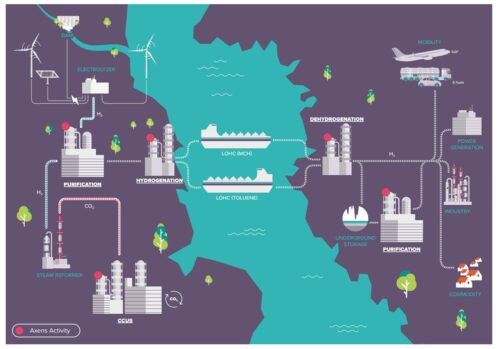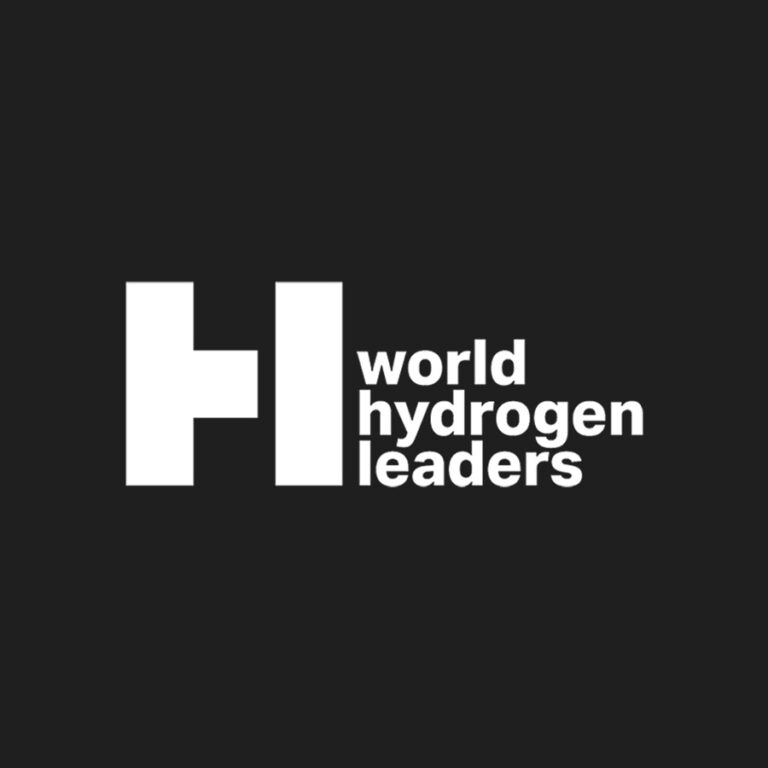By Naomi Green
In their own words, the organisers of Investing in Green Hydrogen aim to unite the global value chain to bridge the gap between hydrogen projects and capital, with a view to accelerating the development of a global market for hydrogen and its derivatives. With this objective in mind, this year’s event addressed a diverse range of issues which are coming to the fore in the space, from the blue and/or green debate to the best means of transporting hydrogen between trading nations, or how to increase diversity in the industry. We visited a sample of keynotes and panels from this year’s expert speakers- here are some of our key takeaways.
Attendees and delegates at Investing in Green Hydrogen 2023

Developers should keep an open mind towards different hydrogen ‘colours’ in the near term, as many or even all may be required to develop the accompanying infrastructure and markets to support a low-carbon hydrogen economy in the long-term.
Contrary to what its title may suggest, speakers at this year’s event spent some time debating the relative value and role of different hydrogen ‘colours’. Alongside green, blue hydrogen was spotlighted for its capacity for fast and cost-effective ramp-up and to provide a stable ‘baseload’ of production (while green hydrogen typically relies on intermittent renewables). In addition to these advantages, Alex Wietfield, CEO of Uniper identified that investing in blue hydrogen complements development of both blue and green technologies by facilitating the establishment of hydrogen value chains, including transport, storage and infrastructure, as well as stimulating demand. In this context, blue technologies might prove a key part of the solution to developing a hydrogen economy at the appropriate pace and scale to meet 2050 targets, ‘bridging’ the next two decades to reach carbon neutrality as soon as possible. Accordingly, multiple speakers referenced a need for policymakers to provide a technology-agnostic approach which supports hydrogen projects of all varieties, including blue and even other ‘colours’ as their technology matures, such as ‘pink’ (nuclear-based) or ‘white’ (naturally occurring) hydrogen.
However, there remain key questions around blue hydrogen, such as what is meant by the ‘transitional’ timeframe often associated with it. Speakers opened conversations over how long a ‘transitional’ period of developing blue hydrogen projects may last (before an implicit transition to 100% green hydrogen), or whether we should pursue new blue hydrogen developments (as is the case in Europe) or focus solely on deploying CCS systems within existing grey hydrogen plants, keeping these existing assets in the ground running economically while we develop a new, green hydrogen network. Building consensus on these key issues might be considered a key building block in developing a hydrogen economy that is both environmentally and economically sustainable.
Liquid organic hydrogen carriers (LOHCs) offer untapped potential for the safe and efficient transport of hydrogen across and between nations.
Another key issue touched upon was the most appropriate way to transport hydrogen, especially as the currently largely 1:1 producer to offtaker agreements, or ‘clusters’ and ‘valleys’ taking shape across Europe and the US begin to give way to the development of a global hydrogen trade. Chiyoda Corporation and Axens have come together in pursuing the use of liquid organic hydrogen carrier (LOHC) toluene to transport hydrogen within existing infrastructure. Though there are multiple viable LOHCs for the transportation of hydrogen, toluene has a number of competitive advantages. Liquid under ambient temperatures, it is easy to handle and relatively safe, with a level of risk the companies assert is around that of petroleum products. The toluene molecule is converted to methylcyclohexane by hydrogenation in a process which has demonstrated high levels of efficiency, making toluene cost competitive with ammonia as means to transport hydrogen over long distances (e.g. between Qatar and the UIK, as outlined in a study undertaken by Chiyoda and partners). Axens’ toluene hydrogenation technology is ready to be used, and the partnership assert that it will become a key enabler for the global hydrogen supply chain.
LOHCs in the hydrogen value chain (Source: Axens)

Carefully-designed policy interventions are required to address ‘chicken-egg’ dilemmas and stimulate market development, but should be kept simple to avoid ‘overregulation’.
Broadly speaking, policymakers will need to pay attention and adapt to the uncertain cost trajectories of hydrogen production technologies and overall costs. Speakers had differing views over to what extent the price of hydrogen would decrease over time, with some identifying the key differences between hydrogen production costs and that of renewable electricity sources such as solar, for example. While a wind turbine or solar panel have seen cost optimisation which has led to huge drops in the cost of wind or solar electricity, the production of hydrogen relies only in part on the cost of the electrolyser technology, with a large part then pertaining to the cost of the electricity required to power the electrolyser- over which hydrogen producers have little control. Some panellists also expressed concern over the precious metal requirements of technologies such as PEM, stipulating that this may also adversely impact hydrogen production costs- however others pointed out that there are research centres working on these issues and innovations developing to mitigate them as these discussions are happening.
The varying cost of hydrogen composes part of the pressing issue that is addressing the demand side of the market with policy. As many speakers identified, newer mega-scale projects need to find a different market than what we have seen previously (largely 1:1 agreements with industries such as steel and heavy transportation) given that industry is not at a point of readiness to enter into longer-term contracts (due to issues such as the uncertainty around hydrogen cost and technology trajectories), while these projects need an anchor offtaker willing to sign a long-term offtake agreement which guarantees demand for some time. In this context, the development of revenue certainty mechanisms is a key unlock to the development of an ultimately self-sustaining hydrogen economy. In other words, funding support needs to incorporate de-risking on both the supply and demand side to ensure those gaps are being closed.
However, as some panellists warned, there is a risk of ‘overregulating’ the market: for example, policies such as those which stipulate additionality (new, dedicated renewable capacity) is required for hydrogen to be categorised as ‘green’ can be counterproductive to goals of rapid hydrogen scale-up. Similarly, Benjamin Haycraft (Plug Power) identified that funding processes which are overly complex or bureaucratic can slow down the development of valuable projects, which often press pause on FID due to waiting for a subsidy which may take months to produce an outcome, or offer a much higher chance of success on second application (e.g. the EU’s Innovation Fund). Haycraft sees this as a key differentiator between the EU and US markets, asserting that less bureaucracy stagnates application processes in comparison to in Europe, where 200 page applications to Brussels are commonplace.
The emerging green hydrogen market is a ‘yes and’ space, with collaboration bringing opportunities for greater diversity and inclusion of new players.
A final key takeaway from the two-day event was the opportunities afforded by the developing green hydrogen market for diversity and inclusion, both in the sense of diverse people, diverse uses and offtakers, and geopolitics- with new players emerging as a result of the somewhat more democratic distribution of renewable potential when compared to that of fossil fuels. Discussions spanned everything from bringing more women into the hydrogen space to how to diversify demand from 1:1 produce to offtaker projects to a more portfolio approach, including a variety of both use cases and derivatives (an attractive trajectory as this will support larger mega-projects able to drive down costs). In terms of geopolitics, it was raised that 50-60% of the cost of hydrogen today comes from the sourcing of power, which is beginning to create a focus on geographic zones where renewable electricity is affordable and thus bringing opportunity for new players to enter the market, especially in the developing world, where investment can prove particularly valuable in creating value beyond just the energy sector.
The event featured a number of case studies of nations and their hydrogen roadmaps, including Oman, for example- which published its first hydrogen strategy in 2022, beginning a series of public auctions at the same time, which are now advertising their second round. According to Hafsa Al Subhi (Accounts Manager at Hydrom), Oman boasts a strong renewable portfolio, with strong wind speeds and solar PV potential, in addition to 50,000km2 of land allocated for green hydrogen projects and a strong skillset in the oil, gas and renewables sector that can be repurposed for green hydrogen development. Accordingly, Oman’s Government demonstrates high ambition in the hydrogen space, targeting over 1,000,000 tonnes/annum production by 2030. The hydrogen economy not only offers a new source of revenue for Oman, but an opportunity to develop the country’s own energy security and resilience, moving away from a current heavy dependence on oil and gas. Following the first round of auction, more than 60 international companies have already requested access to Request for Qualification for round one of the public auction, and five projects in the Duqm region have been awarded funding as of June 2023, positioning Oman as one of the world’s leading hydrogen hubs. There are clear opportunities across the nascent developing green hydrogen value chains in nations like Oman, which feeds into the wider important message from Investing in Green Hydrogen 2023, that though there remain challenges to be overcome, the global hydrogen trade can become a force for good.



